Let’s dive into the mysteries of Peru. In a country where nature is closely related to beliefs and traditions, it’s no surprise that many natural landmarks are sacred for one part of the population or another. Hence the creation of 12 national parks, 9 national sanctuaries, 15 national reserves and many more protected areas. Following in ancient footsteps from the jungle to glacial lakes to the top of mountains, hoping to spot the wild vicuña or the elusive condor on the way, we’ve asked fellow travellers to tell us a bit about their favourite national parks in Peru.
Best national parks in Peru:
Paracas National Reserve
Pubali and Indranil from Paradise Catchers visited Paracas National Reserve in October.
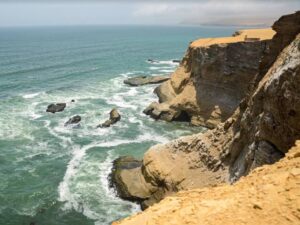
Paracas National Reserve, located about 270 km south of the capital city Lima, is a coastal reserve. It protects the desert and marine ecosystem of the region.
Desert, ocean and islands sync together to form stunning landscapes at the Paracas National Reserve. The reserve comprises some beautiful beaches like Playa Roja. But they are not your typical palm-fringed ones. Instead, you will see miles of coastline where the desert meets the ocean, and typical rock formations like La Catedral.
Why is this your favourite national park in Peru?
You can take a boat trip to the Ballestas Islands that lie within the limits of Paracas National Reserve. The islands swarm with seals, sea lions, penguins, and thousands of birds. That is why people often refer to the Ballestas as the poor man’s Galapagos.
On your ride to Ballestas Islands, you can get a view of the Candelabra, the creators of which are still unknown. The Candelabra is a huge candlestick-like geoglyph inscribed on the desert cliff.
Paracas National Reserve is a wonderful combination of mysterious history, fascinating geography and amusing wildlife. That is why you should put it in your must visit destinations of South Peru.
What did you like less?
Paracas National Reserve spans over 3,350 sq.km. You may find it difficult navigating through the vast expanse of the reserve on your own. Hence the most convenient option is to opt for a tour, shared or private.
Useful information about
Reserva Nacional de Paracas:
| Best time to go: | November to February |
| Closest town: | Pisco |
| How to get there: | 4 hours road trip from Lima |
| Entrance price: | 11 soles |
| Other expenses: | / |
Pampa Galeras Barbara D’Achille National Reserve

If you like llamas, you’ll love vicuñas! Those sweet camelids are the wild cousins of the more famed llamas, but they’re somehow more graceful. Pampa Galeras National Reserve was created to protect them and there are around 6,000 vicuñas roaming freely its high plains today.
What is great about this national park in Peru?
Vicuñas and their domestic relatives, the llamas and the alpacas, have always taken an important part in the Andean cultures. They’re mainly appreciated for their thick wool –important in these altitudes– but also for their meat. Llamas have also been used as pack animals since before the Incas.
Every June 24th, an ancestral ritual takes place inside the Pampa Galeras National Reserve. During the Fiesta del Chaccu, Quechua people come to shear the wool of vicuñas, dance and play music, as a celebration to the gods.
Within the park, several hiking paths lead to century-old chullpas (funerary towers), cave paintings and stone forests.
What could be improved?
It’s possible to overnight inside the reserve; but because of its high altitude, nights get extremely cold, with temperatures often plunging below 0°C (32ºF).
Useful information about
Reserva Nacional Pampa Galeras-Bárbara d’Achille:
| Best time to go: | April to November, dry season |
| Closest town: | Nazca |
| How to get there: | by car (is there public transportation too?) |
| Entrance price: | free |
| Other expenses: | / |
If you’re a fan of those cheeky camelids –and if you decide to explore the oft-overlooked Northern Peru– don’t miss Calipuy National Reserve. This park is meant as a refuge to the guanaco, another wild cousin of the domesticated llama. With some luck, you can also spot condors and pumas, therefore completing the trilogy of Andean sacred animals.
Titicaca National Reserve

What is unique about this national park?
This park is built around the Titicaca Lake, the highest navigable in the world. The lake is actually shared by Peru and Bolivia so it can be visited from both sides and is an ideal border crossing point.
Titicaca Lake is a legendary place for the Incas. In fact, many artefacts and ruins can be found in the area. The biggest tourist attraction in the national park is the Uros Islands, also called floating islands, which are small islets made of totora reed floating on the lake. Indigenous people still inhabit them, and visitors can have a peek into their traditional life.
Other parts of the national park are rather quiet with rustic beauty where farmers cultivate their crops of potato. If you come to the area it’s really worth seeing more of the natural park than just the floating islands: there are several walks and boat tours.
What could be improved?
Although the floating islands are truly a unique place to visit, the place caters too much for tourism; for travellers who look for authenticity, it might seem a bit fake. Also, since Titicaca is in high altitude, take it easy during the days when you acclimatise, and bring warm clothes.
Useful information about
Reserva Nacional del Titicaca:
| Best time to go: | Between May and August to avoid the rainy season |
| Closest town: | Puno |
| How to get there: | Puno is on the lakeside. If you want to go to the islands, you need to book a tour. |
| Entrance price: | Free |
| Other expenses: | Tour to the islands |
Manu National Park
Ruma from The Holiday Story visited Manu National Park in June.
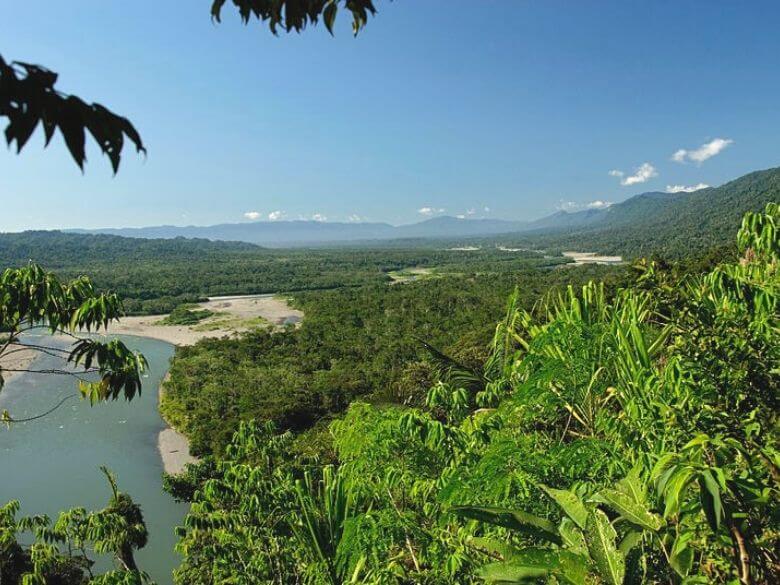
Manu National Park comes as one of the largest protected areas in the world. The park is located in the southeastern part of Peru. Since 1977, UNESCO lists this biosphere reserve as a World Heritage Site. There are 3 parts within the park:
- the Cultural zone can be visited on your own,
- the Reserved zone must be visited with a guide
- and the Intangible zone is strictly for researchers
The presence of over five hundred kinds of animal species make this park an absolute unmissable. Among them, rare animals can be found here like the giant otter, the jaguar, the spider monkey and many more. It’s a delightful place to spend a few moments with nature. So pack your bag and start off your journey for Manu.
Why is this your favourite national park in Peru?
Visitors love the river trip, surrounded by many birds and animals. The view is enchanting! To see the nocturnal animals, you must take a night walk inside the park. The most notable part of this park leads you to watch macaws at the so-called ‘clay licks‘. Have a canopy walk from here to explore the place from a unique perspective. It gives a stronger knowledge about the life of trees.
It’s possible to camp inside the park. To enjoy it to the fullest, better camp in the complete darkness of nature. There are also many kinds of adventurous things to do within Manu, like white water rafting.
What did you like less?
Though this park has several attractions, it lies in a fairly remote area and is rather hard to reach. Tourists are only allowed in the Cultural zone; only a very few tour operators get permission to access the Reserved zone. And that at an expensive rate too.
Useful information about
Parque Nacional del Manu:
| Best time to go: | From May to August during the dry season. |
| Closest city (town): | Cusco (Itahuania) |
| How to get there: | Bus from Cusco to Itahuania (10 hours), then boat until Boca Manu. Or by plane directly from Cusco to Boca Manu. |
| Entrance price: | free |
| Other expenses: | Tours possible from Cusco; guide to visit the Reserved zone |
The large corridor resting on the flank of the Andes between the towns of Cusco and Huánuco is divided into 2 huge national parks: Otishi National Park to the south (accessible from Sivia) and Yanachaga-Chemillén National Park to the north (accessible from Oxapampa).
Both of these immensities are made up of low-altitude mountains rolling under a blanket of tropical cloud forests. It’s part of the so-called Peruvian Yungas; a humid area of dense vegetation that you might know from the Inca trail on your way to the Machu Picchu.
This is the heart of Peru and the lung of the world. At the crossroads of several ecoregions, this area, one of the most biodiverse in the world, is essential to life on our planet.
Tambopata National Reserve
Becki from Meet Me In Departures visited Tambopata National Reserve in January.
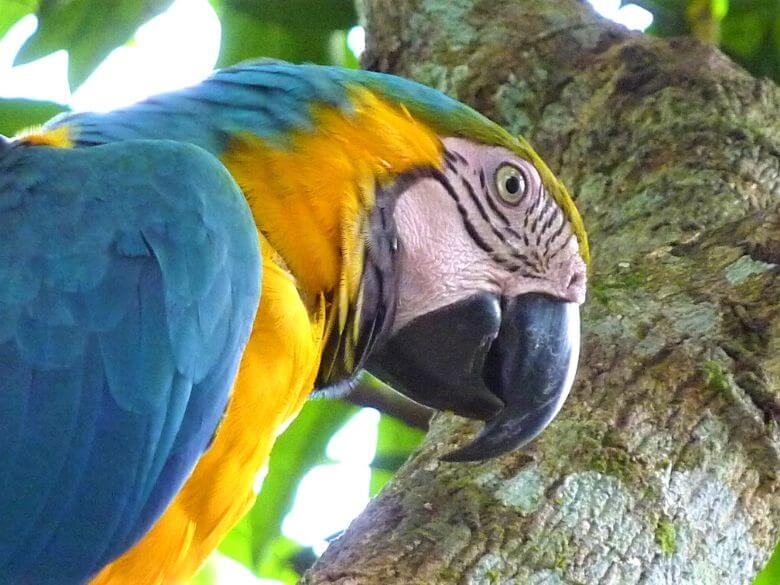
In Peru, one of the top national parks is undoubtedly going to be linked to the Amazon, the world’s biggest tropical rainforest. Approximately 13% of the Amazon is located in Peru. Tambopata National Reserve is one of the gateways into the Peruvian share of the Amazon Rainforest.
According to the WWF (World Wide Fund for Nature), the rainforest is home to over 427 different mammals and 1,294 different birds as well as thousands of reptile, amphibian and insect species. If you’re after one of the best wildlife destinations, then you will be in your element in the Amazon.
What is unique about this national park?
I had a 6-day stay in the rainforest during January, which is technically their wet season (in all honesty, it’s called a rainforest because it rains throughout the year). At the end of each day, with the help of my guide, I kept a record of the species of bird, animal, reptile, amphibian and insect we had seen. By the end of my 6-day stay, I had clocked over 250 species!
I was also shown so many varieties of plants and fauna and told how they were used for different types of medicine and other practical uses.
Personally, Tambopata was my idea of heaven and I would go back in an instant. With nothing but the sound of monkeys, birds and the jungle, it really is pure bliss!
What could be improved?
One of the downsides of visiting Tambopata National Reserve is that it does take some organising to get there and a whole day worth of travel. If you’re in Cusco, you can get a direct flight to Puerto Maldonado and from there a combination of overland (bus or 4×4) and boats to get to Tambopata.
Also, if you’re someone that craves hi-tech living (flat-screen TV, minifridge, air con etc), you’re not going to get it here. Being in the heart of the jungle, there was no WiFi and electricity was switched off at 10 pm. There is also plenty of bugs which bite – take lots of long sleeved, quick-drying tops and trousers as well as a decent bug repellent to keep them at bay.
Useful information about
Reserva Nacional Tambopata:
| Best time to go: | Dry (but warmer) season: August to November |
| Closest town: | Puerto Maldonado |
| How to get there: | Bus or plane to Puerto Maldonado; then bus or 4×4; then boats |
| Entrance price: |
|
| Other expenses: | Possible jungle tours and river boat trips |
To the south, across the regional border, Tambopata becomes Bahuaja-Sonene National Park. This green patch of river terraces, hills and mountains shares borders with the Madidi National Park in Bolivia. Really, the Amazon, in Peru like everywhere else, is full of protected areas, national parks & reserves. Officially at least; in reality, hectares are being illegally destroyed by farmers and miners looking to make a living out of the soil’s wealth, endangering the whole planet’s ecosystem while doing so.
Pacaya Samiria National Reserve
Alex from Career Gappers visited Pacaya Samiria National Reserve in July.
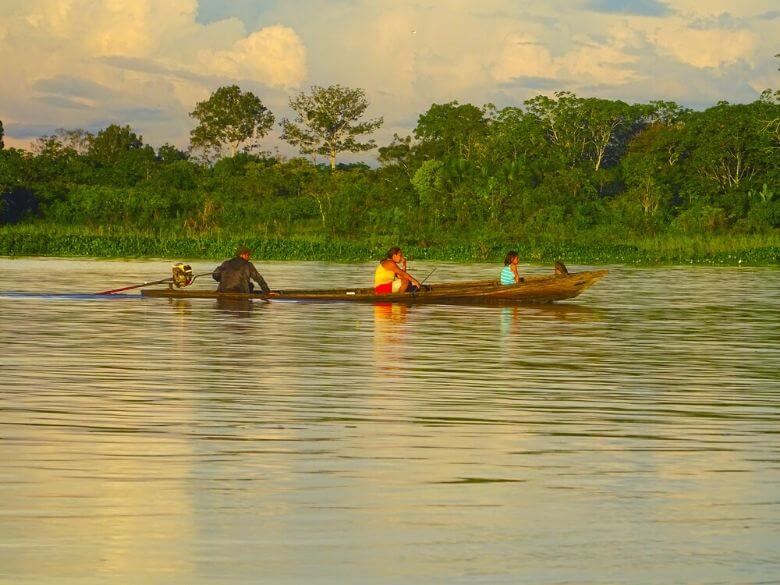
Peru is perhaps most famous for its Inca history and the historic ruins hidden deep in the Andes Mountains. But with two thirds of its land covered by Amazonian jungle, there is another great dimension to this spectacularly diverse country.
The isolated city of Iquitos is a good gateway for exploring the Amazon in Peru. It stands on the doorstep of Pacaya-Samiria National Reserve, a huge protected area of biodiversity flanked by the rivers of Marañón and Ucayali, whose nearby confluence is where the mighty Amazon begins. Covering an area of over 20,000 square kilometres, the reserve is one of Peru’s largest protected locations.
You can visit the reserve on an organised tour with a local naturalist guide; it is not possible to enter without a qualified expert. The easiest option is to book a tour from Iquitos; alternatively you can travel overland from Iquitos to the town of Nauta, on the edge of the reserve, and arrange a tour from there. Our trip was in July at the height of the dry season (June–October), when the weather conditions are optimal.
What is unique about this national park?
Inside the reserve, you can expect to witness a remarkable array of wildlife unique to this part of the world. It’s common to see pink dolphins frolicking in the river, and you may also encounter turtles, monkeys, anacondas, tarantulas and the rather terrifying bullet ants (don’t worry, your guide will keep you safe!).
What could be improved?
Pacaya-Samiria National Reserve does take a lot of effort to reach – but it’s a worthwhile time investment for the natural rewards that await. Iquitos is cut off from the other civilisations in Peru, and is not accessible by road; to reach it you must fly from Lima, or take a long and adventurous boat ride from Yurimaguas, which traverses along the perimeter of the reserve.
Useful information about
Reserva Nacional Pacaya-Samiria:
| Best time to go: | June–October, during the dry season, for better chance of wildlife spotting |
| Closest cities (towns): | Iquitos (Nauta) // Tarapoto (Lagunas) |
| How to get there: | Book a tour from either Iquitos or Nauta, or Lagunas on the other side |
| Entrance price: | 30 soles |
| Other expenses: | Multi-day tours include guide, food & accommodation |
The Cordillera Azul National Park lies somewhere between the green lung of the Amazon and the spinal range of the Andes, some 250 km (155 mi) south of Tarapoto. It’s a vastness of trees covered in clouds and high-altitude swamps, an important part of the moist forest region. An ecosystem that requires respect and a rain jacket all year round.
This tropical rain forest is a wet affair to say the least. Located on mountain slopes, it’s striped with small rivers, dotted with lakes and splashed with waterfalls. Among the highlights, the Chambirillo seems to be the best viewpoint. Cordillera Azul is also a paradise for botanists and bird watchers.
There are hiking trails connecting it all but we don’t know whether it’s possible to tread them without a guide. All visitors need a permit issued by the Sernanp, the bureau in charge of the national parks in Peru.
Huascarán National Park
We visited Huascarán National Park in March.

A mere night bus journey away from Lima, the mountainous region that surrounds the town of Huaraz welcomes hikers and mountain climbers of every level. The town serves as a great base to explore peaks, lakes and glaciers on one-day or multi-day hikes.
Why is this your favourite national park in Peru?
When I daydream of going on a mountain hike in a magnificent scenery, my vision is very much like what we saw in the Huascarán National Park. It’s a vast area in the Cordillera Blanca with steep paths to unbelievably colourful highland lakes.
Of course, there are tough multi-day hikes – like the famed Santa Cruz trek – where the altitude and the rainy weather are a constant challenge. But there’s also a myriad paths criss-crossing the area, this rocky and icy playground that’s easily accessible from town.
After Patagonia, the Huascarán National Park, the jewel in the crown of the Andes mountains, is the nº2 hikers’ paradise in South America. An el dorado for nature lovers and everyday wanderers.
What did you like less?
The park is in high altitude, which makes movement slower and more difficult; so a time for adaptation is indispensable. We recommend you start with a low-altitude, short hike like the one to Laguna Wilcacocha.
The park has a “boleto” (pass) system and the entrance is not exactly cheap. The best is to get a 3-day pass, allowing you to do 1 trail each day for the price of 2. A tad demanding but worth the effort!
Except for the Laguna 69, there’s really no need to take an organised tour. There are minivans going almost everywhere, but their stops are not marked. Ask at the tourist office beforehand for the schedule and the location of the different stops.
We’ve written about our 3 favourite day hikes in the Huascaran National Park – check them out!
Useful information about
Parque Nacional Huascarán:
| Best time to go: | March – November |
| Closest town: | Huaraz |
| How to get there: | Bus to Huaraz; from there, public minibuses drive to the different trail heads. |
| Entrance price: |
|
| Other expenses: | Many other hikes nearby aren’t part of the Huascarán National Park & have their own entrance price. |
The Huascarán National Park is one of our favourite national parks in South America.
Rio Abiseo National Park is another moist forest paradise, situated north-east from Huascarán and close to the Cordillera Azul. Besides the hills, lakes and waterfalls, the park –protected by the UNESCO– also hosts more than 30 pre-Columbian archaeological sites.
Cutervo National Park

The oldest protected area in Peru lies high up in the Andes, at 1550 to 3500 metres (5,085 – 11,500 ft) above sea level. It’s a region of páramo (mountainous vegetation) and giant wax palms that remind vaguely of the Cocora Valley in Colombia.
What is so good about this national park?
Far from the Andes or the Amazon and their usual landscapes of mountains and jungle (you’ve seen one, you’ve seen them all, right?), Cutervo National Park offers something different. These green rolling hills with the giant palm trees sticking out like antennas are something else. There are also several caves with their fascinating rock formations that can be visited.
Although it’s in a part of Peru that is too seldom visited, the park is easily accessible, reasonably close as it is to the town of Jaén.
What are the drawbacks?
Some might think it’s even too close to civilisation; the park boundaries are too often disrespected, with farmers settling to cultivate always more land and extract wood for sale.
It’s not the wildest piece of nature either. There is a fair amount of national visitors on some trails and in some caves. But if you’ve survived a visit to the Machu Picchu without any panic attack, you’re good to go.
Useful information about
Parque Nacional de Cutervo:
| Best time to go: | All year round |
| Closest town: | Jaén |
| How to get there: | Bus from Jaén or Cutervo |
| Entrance price: | free |
| Other expenses: | guides in Spanish available |
Cerros de Amotape National Park
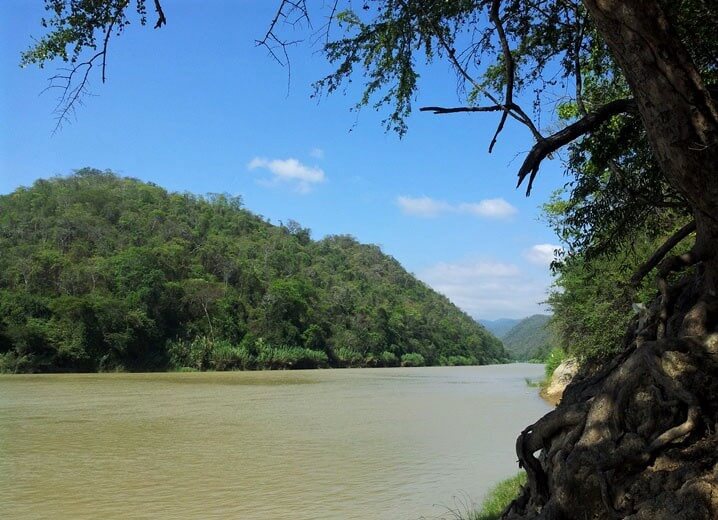
The northern coast of Peru, right before the land turns into Ecuador, is famous for its waves. Many visitors come all the way to Máncora, the small oceanside town, for surf sessions and sleepless nights. But venture inside the land and you’ll stumble upon a subtropical terrain with seasonally dry forest and tropical forest.
What is good about this national park?
The main advantage of this park is how accessible it is, especially from the tourist hotspot of Máncora, or the bigger town of Tumbes. It’s ideally located for a hike in the green if you want to escape the beach for a day.
There are many quiet trails, waterfalls and water pools for a sweaty dip. Its dry forests are home to several species of wild orchids, deer, monkeys, ocelots and American crocodiles among others. It’s also relatively flat, so a real family treat, even for the less sporty among us.
What’s not so great?
Well, this is not the craziest national park in Peru. We’re glad it exists, as it protects an ecosystem that’s different to the others; it’s also a way to connect the people living in the nearby cities to nature. But it’s not a place where we’ll lose our senses and feel small in the scheme of the greater cosmos.
Useful information about
Parque Nacional Cerros de Amotape:
| Best time to go: | All year round |
| Closest city (town): | Tumbes (Máncora) |
| How to get there: | By bus from any town |
| Entrance price: | free |
| Other expenses: | / |
In the continuity of the Cerros de Amotape National Park, you’ll find the Tumbes National Reserve. They’re both part of the Noroeste Biosphere Reserve protected by the UNESCO. It offers the same type of coastal mountain landscape as its neighbour and the same wildlife; but probably to a lesser extent, considering the very nearby presence of Man (and Woman too).
★
Are you planning a trip to Peru? Which national parks attract you the most?
Tell us in the comments section below!
Like it? Pin it!
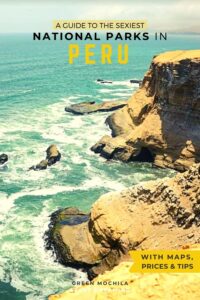
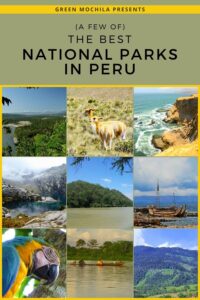
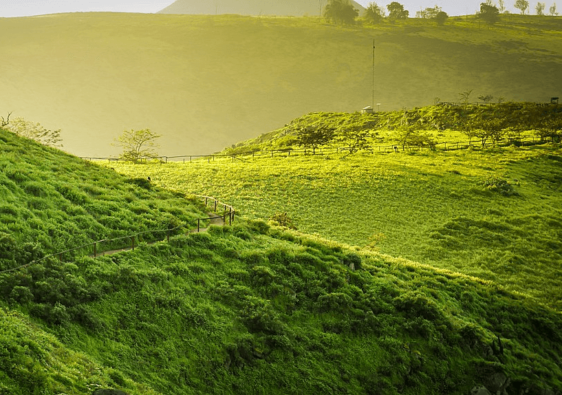
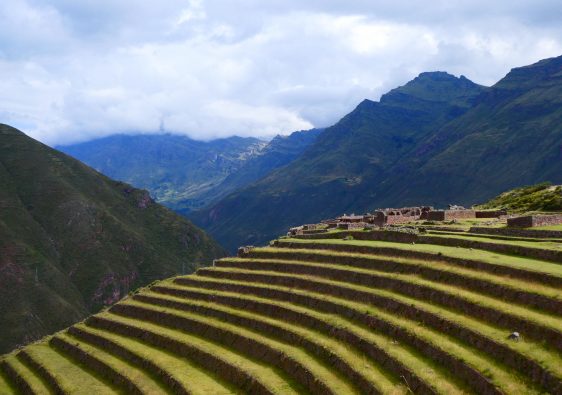
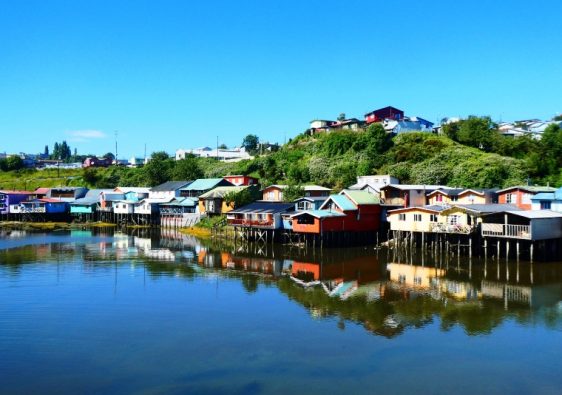

Great work on the lesser known sides of Peru. You could easily spend months there by visiting these alone. I’m definitely enticed by the Amazon and it’s sheer volume of wildlife. That park looks amazing.
Thanks for your comment, John. We need to warn you though: there are giant river otters in the Amazon. Are you okay with those?
You know how much I love your “best of… national parks”. I know so little about South America and its national parks. Thanks for sharing Peru!! Must. Visit. ASAP.
Thank you for your kind words, Lannie. We’re happy that you’re finding here some inspiration for your next nature adventure. Stay safe for now!
A real mix of National Parks – there is something here for everyone. This is a great post full of practical information.
Thanks for your visit, Ruth. We tried to show here the variety in the protected areas of Peru. There’s so much more than the Machu Picchu!